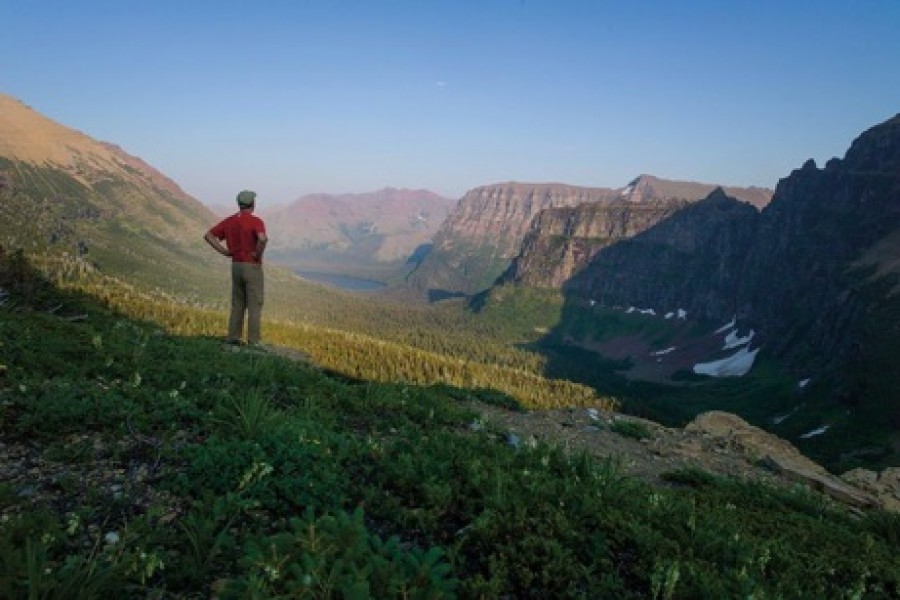Here’s an outstanding op-ed posted yesterday to the Flathead Beacon web site. Recommended reading . . .
In preface to commenting on Stewart Brandborg’s opinion piece on wilderness issues (Dec. 16 Beacon: “Today’s Wilderness Challenge”), I would like to acknowledge with gratitude the service that he and others like Howard Zahniser, Mardy and Olaus Murie, and Aldo Leopold rendered in establishing the framework of our National Wilderness Preservation System. These men and women fought for decades to establish a legacy that benefits all Americans from active users to passive appreciators. Nonetheless, I must offer an alternative perspective to Stewart’s injunction to “resist the fuzzy, fuzzy Neverland of collaboration” when addressing critical wilderness issues.
The Wilderness Preservation System certainly made my career with the U.S. Forest Service immeasurably more rewarding. In my final career assignment, I was supervisor of the Humboldt-Toiyabe National Forest, a forest of 6.3 million acres, including 1.2 million acres of congressionally-designated wilderness. In addition, the H-T has about 3 million acres of roadless areas, de-facto wilderness as it were, that was the subject of intense battles to determine what part should be formally included by Congress in the Wilderness Preservation System.
Managing wilderness is also challenging and much more than a passive exercise in “let it be.” Stewardship of designated wilderness areas is bound by the mandates of the 1964 Wilderness Act. And therein lie many of our management challenges. The introductory section of the 1964 Wilderness Act is inspiring and oft-quoted: “an enduring resource of wilderness…where earth and its community of life are untrammeled by man…” But as a counterpoint to these two paragraphs of poetic vision the Wilderness Act concludes with two pages of exceptions allowing various non-wilderness practices to continue. A cynic might say “Yeah right, untrammeled by man except for multiple airstrips, irrigation reservoirs and ditches, livestock grazing, mineral exploration and mining” – all allowed under the 1964 Act.
What lessons can we draw from these contradictions in the 1964 Act? The most stalwart wilderness proponents will point to these contradictions as ample evidence of the dangers of compromise. As executive director of the Wilderness Society in 1964, Stewart Brandborg no doubt vigorously discussed the concessions that wilderness advocates and their congressional allies should make to enact a wilderness bill. In the final analysis I believe that we would not have had a Wilderness Preservation System instituted in 1964 without concessions to other interests. Alliances had to be built with some who were not fully aligned with wilderness protection. In the end the perfect did not become the enemy of the good.
And for the future?
First, we must manage designated wilderness to minimize impacts on the values outlined in the Wilderness Act and to eliminate, by all legal means, incompatible uses. Within the limits of public health and safety, ecological forces like wildfire should be allowed to play their natural role. Keeping the wild in this wilderness should be our ultimate metric.
Second, we must proceed on the wilderness designation question. The fight for a comprehensive statewide Montana wilderness bill has seemed never-ending. Progress has been piecemeal. I do not believe further progress can be made without bringing various interested parties to the table despite the dangers these parties might perceive in such a process. Yes, this will involve collaboration and compromise. Wilderness advocates will not be fully satisfied. Some areas may get other designations such as National Recreation Area status to accommodate non-wilderness recreation uses and other management objectives.
I certainly cannot speak for the Montana Wilderness Association or local representatives of the Wilderness Society, but I applaud their hard work on efforts such as the Blackfoot Clearwater Stewardship Project as they engage other groups such as Pyramid Lumber and motorized recreation clubs. I know these groups wrestle with difficult questions in meeting with other interested parties: “Have we given too much? Does this affect our core principles?”
For me there are multiple payoffs for such efforts. Not only is there the prospect of additional wilderness designation and better stewardship of our natural resources, but we also further the goal of a more civil society where citizens with diverse interests can exchange ideas and work together.
Edward Monnig lives in Missoula
